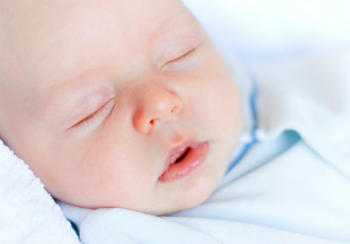8 ways to create a safe sleeping environment for your baby

Every parent knows the excitement of bringing a newborn baby home from the hospital. But that excitement can also be mixed with anxiety over how to make sure their baby is safe and secure at all times. Newborns sleep, on average, 16 hours a day so creating a safe sleep environment is one of the most important things you can do to ensure your baby’s health and well-being.
1. Place your baby to sleep on their back
The Canadian Paediatric Society recommends that, starting from birth, you should place your baby to sleep on their back on a firm mattress in a crib that meets current Health Canada safety standards. You should do this at all times when your baby is sleeping, both at night and while your baby is napping. This is a practice you can follow throughout your baby’s first year of life.
2. Put your baby’s crib in your bedroom
You can put your baby’s crib in your bedroom for the first six months which will make it easier for you when your baby wakes up in the middle of the night. If your room is too small for a crib, use a cradle or a bassinet that also meets current Health Canada safety regulations.
3. Don’t use rolled-up blankets
Make sure you don’t use rolled-up blankets or any other support to keep your baby on their back since these can cause your baby to suffocate.
4. Never put your baby to sleep on a sofa, an armchair, a waterbed or cushions
Your baby could easily turn over on to their sides or their stomachs when placed on these soft surfaces. If a baby turns over on to a soft surface, they may not get enough air to breathe, which can cause suffocation.
5. There should be no stuffed animals, pillows and other pillow-like items in your baby’s crib
These can pose a risk of suffocation.
6. Don’t use comforters or thick covers in your baby’s crib
These can easily cover their heads while they’re sleeping. You can dress your baby in a sleeper instead of using a blanket.
7. Make sure your baby is not too warm
Try to ensure a stable temperature in your baby’s room at all times.
8. It’s very important to keep your baby away from cigarette smoke
Babies who are exposed to smoke, either before birth or after birth, are at increased risk of Sudden Infant Death Syndrome (SIDS).
Following these steps will help ensure your baby’s sleep environment is as safe and secure as possible—something that will help everyone in your home get a good night’s sleep.
For more information about creating a safe sleep environment for your baby, visit the Canadian Paediatric Society’s Caring for Kids website.


